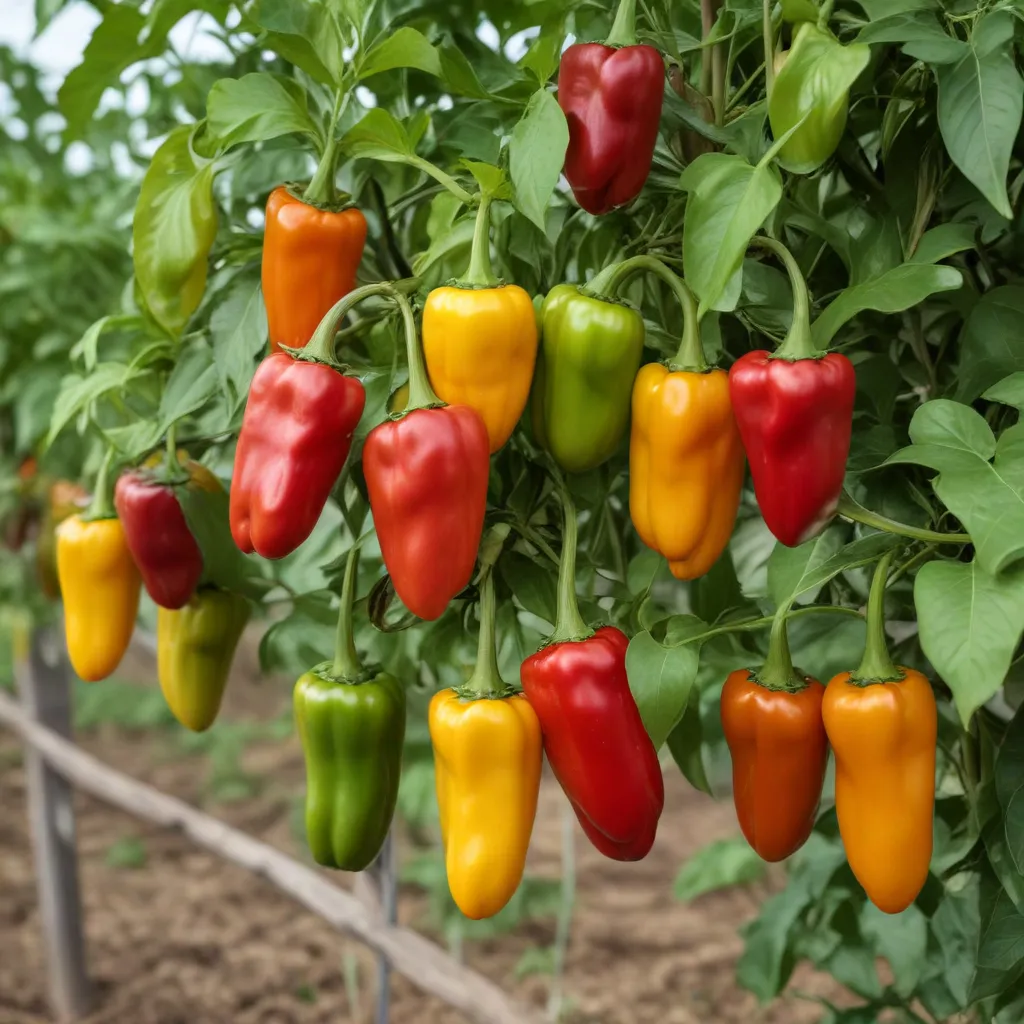
Home gardeners and culinary enthusiasts alike have long revered the vibrant colors, distinctive flavors, and versatile culinary applications of heirloom peppers. These unique varieties, passed down through generations, offer a delightful departure from the ubiquitous bell pepper. As the Wine Garden Inn’s resident hospitality and wine expert, I’m excited to explore the world of heirloom peppers and share the perfect wine pairings to elevate your culinary experiences.
Heirloom Peppers
Varieties of Heirloom Peppers
Heirloom peppers come in a dazzling array of shapes, sizes, and colors, each with its own distinct flavor profile. From the fiery-hot Bhut Jolokia to the sweet and fruity Chocolate Bell, these beloved cultivars have captured the hearts (and taste buds) of discerning gardeners and chefs. Other popular heirloom varieties include the Shishito, known for its delicate, slightly smoky notes, and the vibrant Lemon Drop, which offers a delightful citrus zing.
Cultivation of Heirloom Peppers
Heirloom peppers often require a bit more TLC in the garden compared to their hybrid counterparts, but the rewards are well worth the effort. These heritage varieties thrive in well-drained, nutrient-rich soil amended with compost or aged manure. Proper spacing and consistent moisture are key to promoting robust plant growth and abundant harvests. Many heirlooms also benefit from a bit of shade during the hottest summer months to prevent sun scald and premature ripening.
Flavor Profiles of Heirloom Peppers
The depth of flavor in heirloom peppers is truly remarkable, with each variety offering a unique symphony of notes. The spicy Habanero dazzles the palate with its fiery heat and fruity, almost tropical undertones. The Padron pepper, on the other hand, is known for its delicate, grassy flavors, punctuated by the occasional “surprise” pungent bite. Meanwhile, the mild and sweet Cubanelle shines in sautés and roasted dishes, complementing a wide range of ingredients.
Wine Pairings for Heirloom Peppers
Red Wine Counterparts
When pairing heirloom peppers with red wines, look for robust, fruit-forward varietals that can stand up to the peppers’ bold flavors. A smoky Malbec or a spicy Zinfandel can be an excellent match for the earthy, almost umami-like notes of a Padron or Anaheim pepper. For the fiery heat of a Habanero or Scotch Bonnet, consider a medium-bodied Tempranillo or a Syrah with its peppery undertones.
White Wine Counterparts
Crisp, acidic white wines can provide a refreshing contrast to the nuanced flavors of heirloom peppers. A zippy Sauvignon Blanc or a floral Riesling can beautifully complement the bright, citrusy notes of a Lemon Drop or Jimmy Nardello pepper. For the subtler sweetness of a Cubanelle or Carmen, a Gewürztraminer or an off-dry Chenin Blanc can be a delightful pairing.
Rosé Wine Counterparts
Rosé wines, with their vibrant fruit flavors and moderate acidity, can also make excellent companions to heirloom peppers. The juicy, raspberry-like qualities of a Provençal rosé can harmonize with the fruity complexity of a Shishito or Gypsy pepper. For the bold, almost savory character of a Boynton or Jimmy Nardello, a drier rosé with hints of spice can provide a captivating contrast.
Gardening Techniques
Soil Preparation
Heirloom peppers thrive in well-draining, nutrient-rich soil amended with generous amounts of compost or aged manure. Before planting, test your soil’s pH acidity and make any necessary adjustments to keep it in the ideal range of 6.0 to 6.8. Incorporating a slow-release organic fertilizer can also help ensure a steady supply of essential nutrients throughout the growing season.
Planting and Care
Sow heirloom pepper seeds indoors 8-10 weeks before your last expected frost date, then transplant the seedlings into the garden once the soil has warmed. Provide ample spacing, usually 18-24 inches between plants, to allow for proper air circulation and development. Consistent moisture is crucial, but be sure to avoid waterlogging the soil, which can lead to root rot. Regular applications of a balanced liquid fertilizer can also help boost plant vigor and productivity.
Harvesting and Storage
Heirloom peppers are ripe for harvesting when they have reached their full, vibrant color. Gently snip the peppers from the plant, taking care not to damage the stems. For maximum freshness, consume the peppers as soon as possible. Any surplus can be preserved through techniques like dehydration, pickling, or freezing to enjoy their unique flavors year-round.
Culinary Applications
Cooking with Heirloom Peppers
The versatility of heirloom peppers shines in the kitchen, from roasted and stuffed preparations to vibrant salsas and sauces. The sweet and fruity Chocolate Bell pepper lends itself beautifully to ratatouille or shakshuka, while the smoky Ancho pepper adds depth to mole or chili con carne. For a simple yet elegant side, try pan-searing Shishito peppers with a drizzle of olive oil and a sprinkle of flaky sea salt.
Preserving Heirloom Peppers
To savor the flavors of your heirloom pepper harvest throughout the year, explore preserving techniques like dehydration, pickling, or freezing. Dehydrated Habanero flakes can add a fiery kick to marinades, rubs, and seasonings, while pickled Jalapeños lend their signature tang to tacos, burgers, and charcuterie boards. Freezing whole or sliced peppers is an easy way to capture their fresh-from-the-garden essence for use in soups, stews, and sautés.
Heirloom Pepper-Infused Dishes
Elevate your culinary repertoire by incorporating heirloom peppers into a variety of dishes. Try a Roasted Red Pepper Hummus featuring the sweet, earthy notes of Piquillo peppers or a Heirloom Pepper Jam with a blend of Banana*, Anaheim, and Gypsy peppers to serve alongside grilled meats or creamy cheeses. For breakfast, whisk up a Heirloom Pepper Frittata with sautéed Shishito peppers and fresh herbs**.
Embracing the vibrant world of heirloom peppers opens up a realm of culinary possibilities. Whether you’re a passionate home gardener or a discerning foodie, exploring these unique cultivars and their perfect wine pairings is a journey of flavor that is sure to delight. For more inspiration, be sure to visit the Wine Garden Inn and discover how our estate-grown produce and thoughtfully curated wine list can elevate your dining experience.
